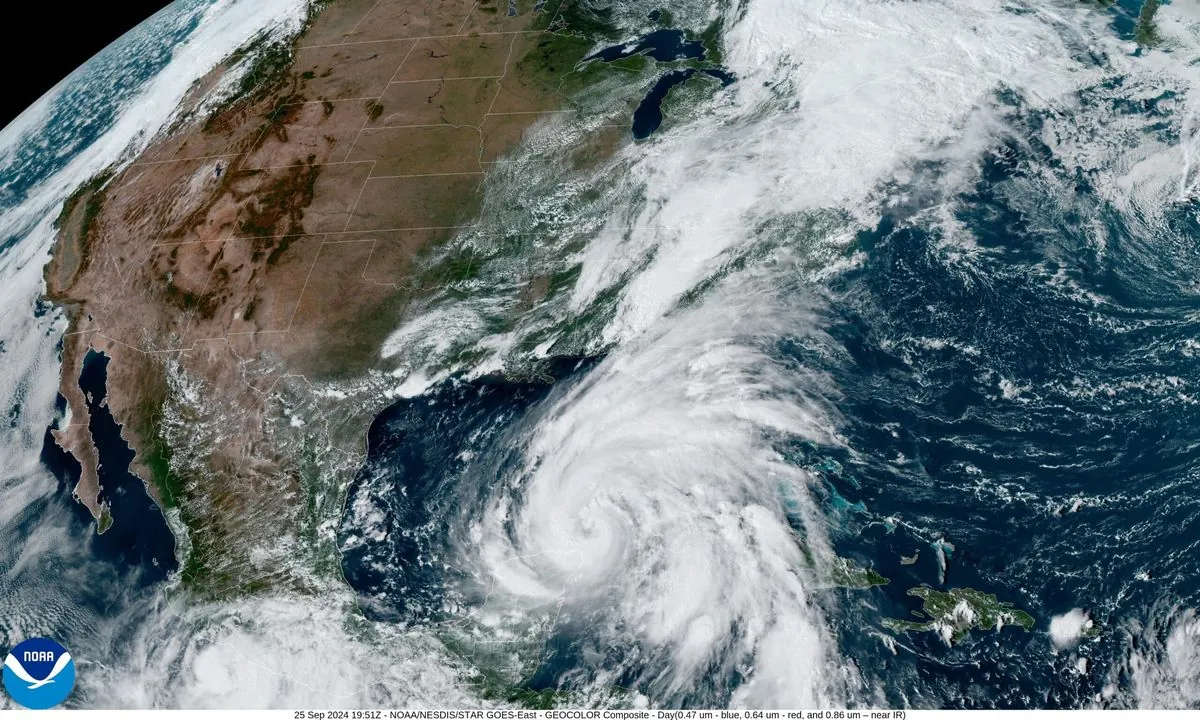As of September 26, 2024, Hurricane Helene has intensified to a Category 2 storm, rapidly advancing across the Gulf of Mexico towards Florida's northwestern coast. The U.S. National Hurricane Center (NHC) in Miami has issued warnings of an extremely dangerous storm surge, along with damaging winds, heavy rainfall, and potential flash flooding extending hundreds of miles inland across the southeastern United States.
Helene is expected to make landfall by evening, with forecasts indicating it may strengthen further to become a major hurricane - Category 3 or higher on the Saffir-Simpson Hurricane Wind Scale. This scale categorizes hurricanes from 1 to 5 based on sustained wind speeds, with higher categories indicating more severe potential damage.
In response to the impending threat, the governors of Florida, Georgia, North Carolina, South Carolina, and Virginia have declared states of emergency. These declarations enable the mobilization of resources and implementation of emergency preparedness measures.
Storm surge, often considered the greatest threat to life and property from a hurricane, is of particular concern with Helene. The NHC has warned of potentially "unsurvivable" storm surge in northwestern parts of Florida. Storm surges can reach heights exceeding 20 feet and span hundreds of miles of coastline, posing a significant risk to coastal communities.
The less-developed region of Florida known as the Forgotten Coast is bracing for impact. This area, cherished for its natural wonders including vast salt marshes, tidal pools, and barrier islands, has largely been spared from extensive commercial development. However, its relatively sparse population and unique ecosystems make it particularly vulnerable to the storm's effects.
Hurricane preparedness efforts are in full swing across the affected regions. Residents are advised to have emergency kits ready and evacuation plans in place. It's crucial to note that hurricanes can cause widespread power outages lasting for weeks and produce tornadoes, further increasing their destructive potential.
While Helene commands immediate attention, it's not the only tropical system of concern. In the Pacific, Hurricane John has re-strengthened, threatening Mexico's western coast with flash flooding and mudslides. Meanwhile, Tropical Storm Isaac has formed in the Atlantic Ocean, with forecasts suggesting it may intensify into a hurricane by the end of the week.
The formation of Isaac marks the ninth named storm of the 2024 Atlantic hurricane season, which runs from June 1 to November 30. The National Oceanic and Atmospheric Administration (NOAA) predicts an above-average season, with expectations of 17 to 25 named storms, including up to 13 hurricanes and four major hurricanes.
As Helene approaches, it's worth noting that hurricane forecasting has significantly improved in accuracy over recent decades. This progress allows for better preparation and response. However, the potential for rapid intensification, especially when hurricanes pass over warm ocean waters, remains a challenge for forecasters and emergency managers alike.
Climate change is expected to increase the intensity of hurricanes in the future, potentially leading to more frequent occurrences of severe storms like Helene. This underscores the importance of ongoing research, improved forecasting techniques, and robust emergency preparedness measures.
As the situation develops, residents in affected areas are urged to stay informed through official channels and follow local authorities' instructions. The coming hours and days will be critical as Helene makes its approach, with potential long-lasting impacts on the southeastern United States.
